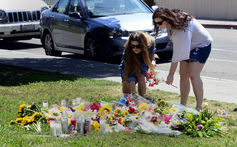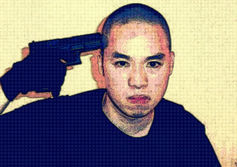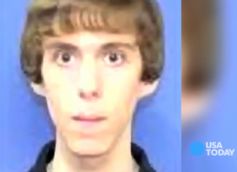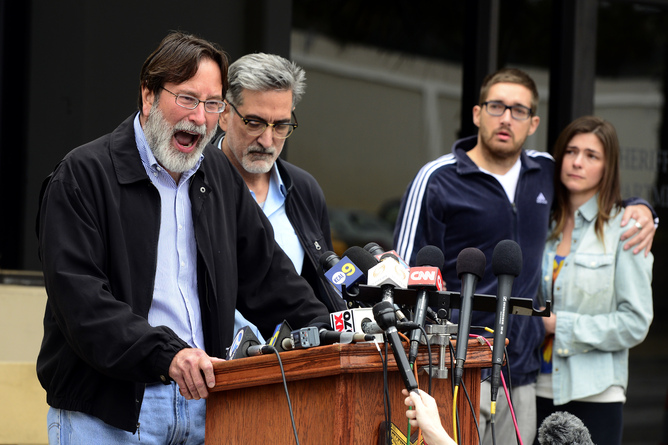The Private Tragedy of Living with a Mass Killer in the Family (Op-Ed)

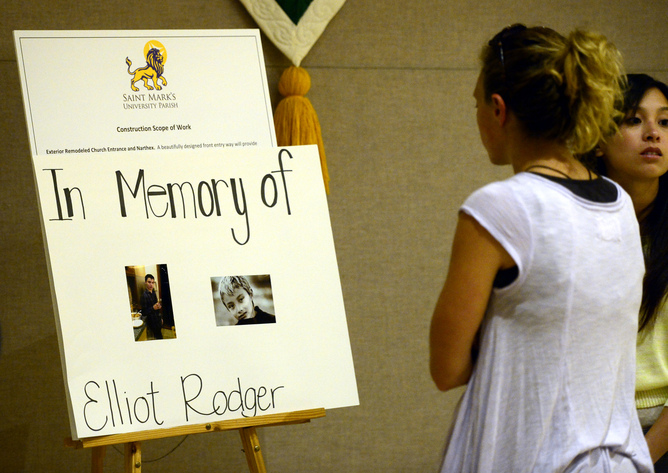
This article was originally published at The Conversation. The publication contributed the article to Live Science's Expert Voices: Op-Ed & Insights.
The mounting flowers and candles in Isla Vista mark the mourning of six university students killed in the mass shooting at the University of California, Santa Barbara, and sympathy for the other 13 who were injured. Families who have lost innocent loved ones will never be the same, and neither will Isla Vista. Some of those who witnessed the horror will shake every time they hear a car backfire; the lucky ones who escaped as the bullets flew may wonder why they were saved.
For the parents of Elliot Rodger, a lifelong process of self-scrutiny will also have begun, even though they clearly made efforts to help their son and warn authorities.
In the two years that my research team spent scouring the history of rampage school shootings across the US, we interviewed the parents and siblings of several juvenile shooters and sought to find those who elected to hide from public view rather than live with the shame that surrounded them. Since then there have been many more killings of this kind, and the story of the families who loved sons who turned out to be killers is a tragedy of its own kind.
Missing the signs
The events that took most parents into the abyss were as mysterious to them as they were to the communities who didn’t see the mounting evidence that something terrible was about to happen. Teenager Michael Carneal, who shot five high school students in a morning prayer group at his high school in West Paducah, Kentucky, in 1997, was known as a joker and a prankster, but no one thought he was dangerous. Until the eighth grade he had also been a very good student. He had friends whose houses he visited and his parents were known as pillars of the community.
Mitchell Johnson, who was half of a duo who shot up his middle school, killing four students and one teacher a year later, was known to all as the most polite kid in his grade. Two months before the shooting that put Westside, Arkansas, on the map, his mother received an unsolicited card extolling Johnson’s virtues from a teacher who told his mum she should be proud of her son. Johnson was already seven months into plotting his killing spree.
Young men who know they are spiralling into murderous madness can be very good at concealing the depths of their descent. In Rodger’s case he had been planning his “Day of Retribution” for at least a year. They know all too well that they are disturbed, but they are embarrassed about their failures – often involving the opposite sex, but just as frequently focused on rejection by their male peers – and the last thing they want is to be publicly defined as damaged. So they “code switch”, behaving normally and congenially with parents, other adults, authority figures in school, while showing the other side to their peers who, we found, were generally not surprised by the identity of the shooter. They know who did it long before the police arrive.
Get the world’s most fascinating discoveries delivered straight to your inbox.
Parents who know
There are examples of the opposite though: boys ready to kill whose unravelling is on the radar screens of their parents, teachers, and mental health professionals. This was the case with Rodger, as it was for Seung-Hui Cho, the shooter at Virginia Tech, and long before them, Kip Kinkel, who killed his parents and then shot up his high school in Springfield, Oregon, in 1998.
Kinkel was one day ahead of involuntary commitment, a notoriously difficult procedure to execute given American legal procedures designed to protect citizens from the arbitrary exercise of state power. Kinkel’s parents tried every conceivable form of treatment. His school expelled him. He was seen by psychologists. Authorities knew he was a danger, at least to himself. But our capacity to take someone in who has actually done nothing wrong other than frighten people is limited.
A desire to make amends
How then do parents contend with their own grief, the loss of their son, while coming to terms with who he really was and what he did to the innocent? The answer is that they never do. They are not allowed to by a public that looks for someone to blame. They are expected to express contrition, to open their most private experience to scrutiny and they do so willingly in the hope that this will somehow make amends for what they didn’t prevent from happening.
These questions are searing enough for the parents of high school shooters. They are undoubtedly worse for the Rodger family, for questions will be raised about why they didn’t keep a tighter leash on a young man with such a long history of emotional problems and psychiatric treatment. But it is precisely his age that made such surveillance problematic. No doubt they were trying to let their 22-year-old learn how to function in adult society, and that requires some degree of autonomy. The same was true for the Virginia Tech shooter.
Trying to find a way to let someone grow up is a struggle for these families. They will be second-guessed about how they made these judgements for the rest of their lives. And they will have to live with the knowledge that someone they loved wreaked the same sorrow that they are experiencing on families who have lost their children.
If Adam Lanza’s mother had survived, she would have felt the same pain: a toxic combination of grief and ostracism. To this day she is not counted among the innocent dead in Newtown, Connecticut, because she is not regarded as an innocent, but rather a kind of accomplice for having permitted her disturbed son access to guns. That she too died at his hands seems not to encourage any sympathy in the direction of her family.
The police too will come to feel the pressure of public opprobrium. They will be asked and will ask themselves why they didn’t search Rodger’s apartment; why they accepted his surface conduct when those who knew him well were ringing the alarm bells. Rodger had three contacts with the police. And the rest of us should ask why someone with such a long history of emotional imbalance could get his hands on lethal weapons, why we missed the signals he was sending of his torment and fantasies of revenge, including on YouTube.
The circle of people who come in for scrutiny and deserve sympathy widens at first but then contracts over time, and no small amount of friction emerges in the wake of such a devastating loss.
Richard Martinez, the father of Christopher who died in the Isla Vista attack, is to be applauded for reaching out to Rodger’s father. “He lost his son. I lost my son – we have that in common,” he said.
Two years after the shootings we studied, the pain was still fresh. A figure like Martinez is rare. It will take a strong community to work together to confront the wider problems – beyond personal blame – that lead to such killings.
Katherine Newman does not work for, consult to, own shares in or receive funding from any company or organisation that would benefit from this article, and has no relevant affiliations.
This article was originally published on The Conversation. Read the original article. Follow all of the Expert Voices issues and debates — and become part of the discussion — on Facebook, Twitter and Google +. The views expressed are those of the author and do not necessarily reflect the views of the publisher. This version of the article was originally published on Live Science.


